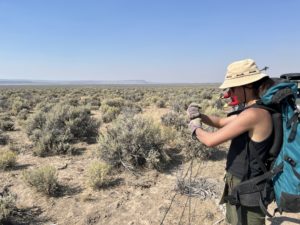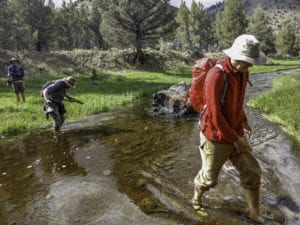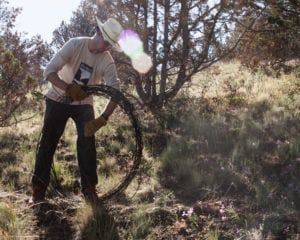620,000 miles — enough to stretch around the earth nearly 25 times. That is the estimated number of miles of fencing currently crisscrossing the American West, according to researchers at UC Berkeley, who note that “fence modifications for conservation might be more urgent than currently recognized.”
The impact of fences on wildlife is a top concern for ONDA and pulling barbed wire fence is deeply rooted in ONDA’s 35-year history.
After ONDA successfully pressured the U.S. Fish and Wildlife Service to remove cattle from the Hart Mountain National Antelope Refuge in 1994, we began leading volunteer trips to remove the now-obsolete barbed wire fences from the refuge because fences can be so detrimental to wildlife safety and migration. When we completed this effort in 2012, volunteers had pulled over 300 miles of barbed wire off the refuge.
In the decade since then, ONDA has broadened our work on fences to include not just removal, but mending, retrofitting, and even building fences. Why might ONDA build fence in some places and remove them in others?
Read on to find out about the types of fence work ONDA volunteers completed in 2022. And, to get involved in future fence projects, subscribe to ONDA’s e-newsletter.



